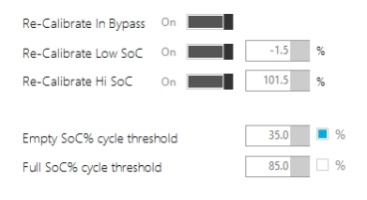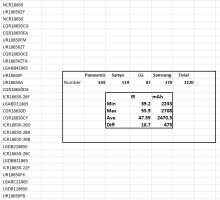Wolf
Moderator
- Joined
- Sep 25, 2018
- Messages
- 2,009
It is neve wracking to a degree but since I made all the mistakes on the first 3 batteries the fourth one was not so bad. Just waited till the Voltages were close enough and since all 4 batteries are in parallel well you know water seeks its own level.Isn't it 'nerve wracking' to hook in a new battery?
Will be interested to see how long it takes for you to balance. Will you be using top (bypass volt) or auto-level balancing?
Since the only battery that is somewhat "unbalanced" if you want to call 100mv difference between high and low cells at 3.5V that.
I will wait till I get to 4.0V or so before I consider top balancing. Battery #1 is notorious for its bad behavior at < 3.6V with max deviation between cells of 100mv. as soon as the voltage gets to 3.65V and above the deviation reduces and settles at ≈30mv at full charge 4.05V the other Batteries run in the 5mv to 25mv range. Let see what todays charge will bring. I will report later in the day.










